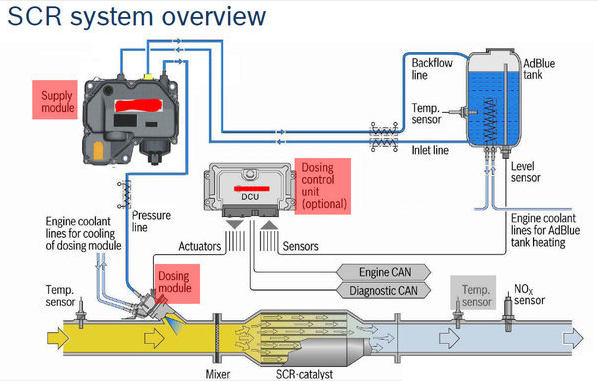 +86 20 26211661
+86 20 26211661
 +86 20 26211661
+86 20 26211661
At present, two technical solutions are adopted to solve the problem of diesel exhaust emissions.
One is SCR technology , another is EGR+DPF.
Principle of EGR (Exhaust Gas Recirculation): The technology introduces engine exhaust gas into the intake pipe to reduces the oxygen concentration entering the cylinder and controls the combustion speed as well as lowers the combustion temperature then reducing NOx generation and emission.
At present, domestic EGR technology in stability, reliability, environmental consistency and further technological upgrading have yet to be examined. Since the EGR works by returning a portion of the exhaust gas produced by the diesel engine to the cylinder, forming a cycle, delaying the combustion process leads to the slowing of pressure formation in the combustion chamber, which is the main reason for the reduction of nitrogen oxides, but easily leads to poor engine combustion, poor economy in the long run.
The EGR engine has higher requirements on oil. Under normal circumstances, the sulfur content in the oil can meet the demand of EGR engine under the condition of 25PPM, but the sulfur content of our domestic diesel is even higher at 350PPM. The main function of the DPF device is to reduce the particles in the exhaust gas from the engine.
Principle of DPF: NO converted NOx by diesel oxidation catalysts and particle catalysts to NO2 then intercept particles and oxidize through particle catalysts to reduce particulate emissions

Principle of SCR :SCR (Selective catalytic reduction technology) is to spray urea solution (concentration of 32.5% ) into the exhaust pipe of the engine, where urea is heated and hydrolyzed into ammonia, and NOX reacts to produce non-toxic nitrogen and water under the action of catalytic converter.
The EGR engine has higher requirements on oil. Under normal circumstances, the sulfur content in the oil can meet the demand of EGR engine under the condition of 25PPM, but the sulfur content of our domestic diesel is even higher at 350PPM and the main function of the DPF unit is to reduce particles in the engine exhaust.
However, the DPF regeneration ability is relatively weak and it is necessary to use a high temperature catalyst to meet the requirements. Therefore, the mechanism for fuel injection after the EGR engine is generated. It mainly injects oil into the DPF, burns the particles in the DPF device, and simultaneously catalyzes by means of the catalyst which allows the DPF to be quickly regenerated. Because of the rear spray device of the EGR engine, the fuel consumption of the engine is invisibly increased.
Compared with the national four-car high-pressure common rail + SCR fuel consumption saves 5% than EGR + DPF; the national five-car high-pressure common rail + SCR fuel consumption is 10% less than EGR + DPF; meanwhile, because the EGR engine system is the principle of exhaust gas recirculation Emission standards are difficult to guarantee after long-term use. The demand for NO in the country's five has been relatively improved, so the follow-up national five-car, under the premise of using EGR + DPF, has added an SCR system, the cost is considerable. Whether the engine is using high-pressure common rail technology or EGR technology, the two will eventually return to the same goal, only to meet higher emission standards and reduce environmental pollution. But for the price/performance ratio, it is still more practical for the high-pressure common rail + SCR system.
 online service
online service +86 20 26211661
+86 20 26211661 sammi@everblue.com.cn
sammi@everblue.com.cn Sammi Sun
Sammi Sun +86 137 1902 0590
+86 137 1902 0590